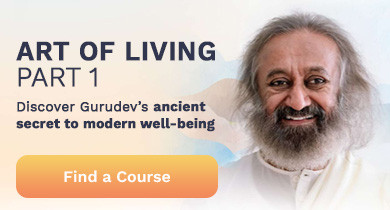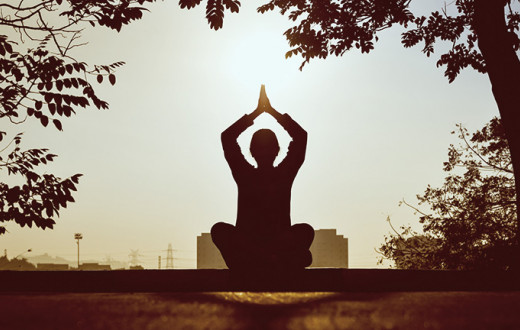By Elizabeth Herman | Posted : October 14, 2020
83% of American workers suffer from high stress levels. Around one million people miss work every day due to such issues. Work-related stress causes 120,000 deaths and results in $190 billion in healthcare costs yearly. Relationship issues, illnesses, economic hardships, and loneliness aggravate physical and mental disorders and tear at the fabric of our lives.
But one readily available way to combat stress happens every minute of every day, and it's free to use: our breath. While we often breathe automatically, it's the one involuntary function of our body that we can also consciously control. We can direct our breath to calm our body and mind and counteract the negative effects of stress.
How breathing exercises work
When you encounter difficult problems or challenges in life, there's a natural stress response. As long as it stops after a few minutes, you'll be alright. But if you start to experience such aggravated responses chronically, you can damage your biological systems over time, causing problems with digestion, high blood pressure, heart disease, emotional and mental disorders, and a depleted immune system.
During these difficult times, you react with fast, shallow breathing that’s designed to speed up your reaction time to physical threats. If you can purposely slow down in the moment and breathe with a slower, deeper pattern, expanding your rib cage and lungs, sending air to the belly as well as the chest, the stress response can transform into a relaxation response. Your brain immediately notices the change in your breath and sends out calming signals to the rest of your body.
In this way, you can much more easily move beyond the need to flee or fight and respond more appropriately and positively. With a regular breathing practice during your peaceful hours, such as the early morning or before dinner or bedtime, your ability to switch off the fight or flight symptoms increases. The skill involved in using this relaxation technique becomes stronger and easier to use when you need it during times of high stress levels.
Benefits of breathing exercises
Here are some of the many benefits of these controlled breathing techniques:
Reduced heart rate and blood pressure.
Relief from anxiety and fight or flight symptoms.
Prevention of cardiovascular disease, digestive ailments, and other chronic, physical illnesses.
Increased energy and ability to enjoy recreation and fun.
Greater stamina when exercising.
Alertness during the workday.
Better relationships with others.
Healthier and more regular sleep habits and relief from insomnia.
Stronger abdominal muscles and even possibly a slim, toned belly.
How breathing exercises can reduce stress
Hormones like cortisol and adrenaline immediately kick in when frightening and challenging events take place, causing faster heart beats, sweating, impulsive and quick movements and actions, and other physical reactions.
In addition to those, your emotions and thoughts can become more chaotic, irritable, and angry. When they take over, they can impact your relationships with others. A deep breathing exercise with a pace that’s slow and steady, rather than fast and shallow, can activate the vagus nerve and stop such destructive stress responses. Abdominal breathing, also known as belly breathing, can diffuse stress instantaneously as soon as you begin to repeatedly expand your abdomen when you exhale and contract it when you inhale.
To stop yourself from going out of control with unhealthy reactions, you can choose to start healthy, regular routines that include practices like mindful breathing, meditation, and yoga on a daily basis. Breathwork can prepare you to meditate, and brings about a relaxation response that you can use to increase your enthusiasm for physical and mental fitness.
Best breathing exercises for stress
Here are some breathing techniques that are easily learned and easy to practice as needed in most situations:
Box breathing (also called square breathing)
Box breathing is a simple, slow breathing exercise that involves deep inhalation, exhalation, and holding the breath for equal amounts of time. During the high stress of combat situations, Navy Seals use this breathing technique to reduce stress and anxiety.
Inhale through the nose, counting to 4, and expand the belly. Hold the breath for a count of 4. Release the breath, exhale through the nose, and contract the belly for a count of 4. After you finish the exhale, hold the breath to another count of 4. Repeat 5-10 times.
Bee breath (also called bhramari pranayam)
This deep breathing technique releases tension and anxiety produces a calming sound that’s similar to a humming bee. The vibrations soothe the mind and body, helping you sleep at night after you practice it any time during the day, especially if you practice it in the evening.
Sit in an upright position. Gently place your index fingers on the outer part of your ear. Take a slow, deep breath in through the nose. Pause when you finish your inhale, closing the ear canal by gently pressing on the outer cartilage. Slowly exhale through the nose while making a humming sound throughout the exhale. You should feel vibrations in the back of your throat. Pause slightly when you complete the exhale, unplug the ears, and repeat this technique 5-10 times.
Straw breath (also called pursed lip breathing)
As the name suggests, this exercise involves exhaling through a straw to reduce feelings of anxiety and panic. The breathing exercise is also known as pursed lips breathing, so if you don't have a straw, you can purse your lips on the exhale instead.
If you have a straw, make sure to keep it handy. Inhale gently through the nose, filling up the abdomen to a count of 4. When you’re done inhaling, take a slight pause to place the straw in your mouth. Alternatively, you can purse your lips as if there’s a straw in your mouth. Exhale gently and slowly to a count of 6. After you exhale, pause and remove the straw. Repeat this exercise for 5 minutes a day.
With these and other tools in your toolbox, you can repair your old tendencies to blow up situations into more stressful challenges than they need to be. You can use your breath every day to take control of your body, mind, and emotions and stop letting the world cause so much trouble for you. You can intentionally breathe to prevent new and even worse health problems from forming.
The SKY Breath Meditation technique can reduce stress even more powerfully than the exercises mentioned above. To learn more, check out Beyond Breath - A FREE Breath & Meditation Online Session With a Live Instructor.
This content is not intended to be a substitute for professional medical advice, diagnosis, or treatment. Always seek the advice of your physician or another qualified health provider with any questions you may have regarding a medical condition.
Elizabeth Herman is a long time meditator and a PhD in English, with concentrations in Rhetoric and Composition, and Literature. She offers writing support to clients, teaches locally, and volunteers for a better world.





























